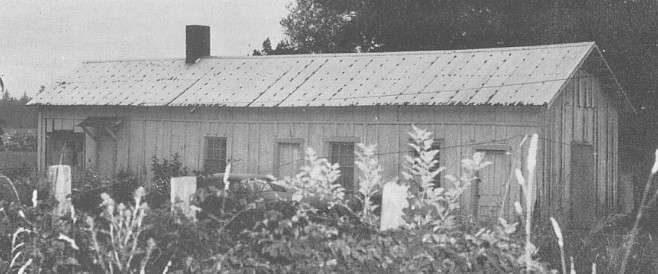



| B | Barracks |
| CO Q | Commanding Officer's Quarters |
| GH | Guardhouse |
| H | Hospital |
| K | Kitchen |
| LAUN | Laundress Quarters |
| MH | Mess Hall |
| OMH | Officers' Mess Hall |
| OQ | Officer's Quarters |
| SH | Storehouse |
| ST | Stable |
This page was reprinted with permission from Old Forts of the Northwest, published in 1965